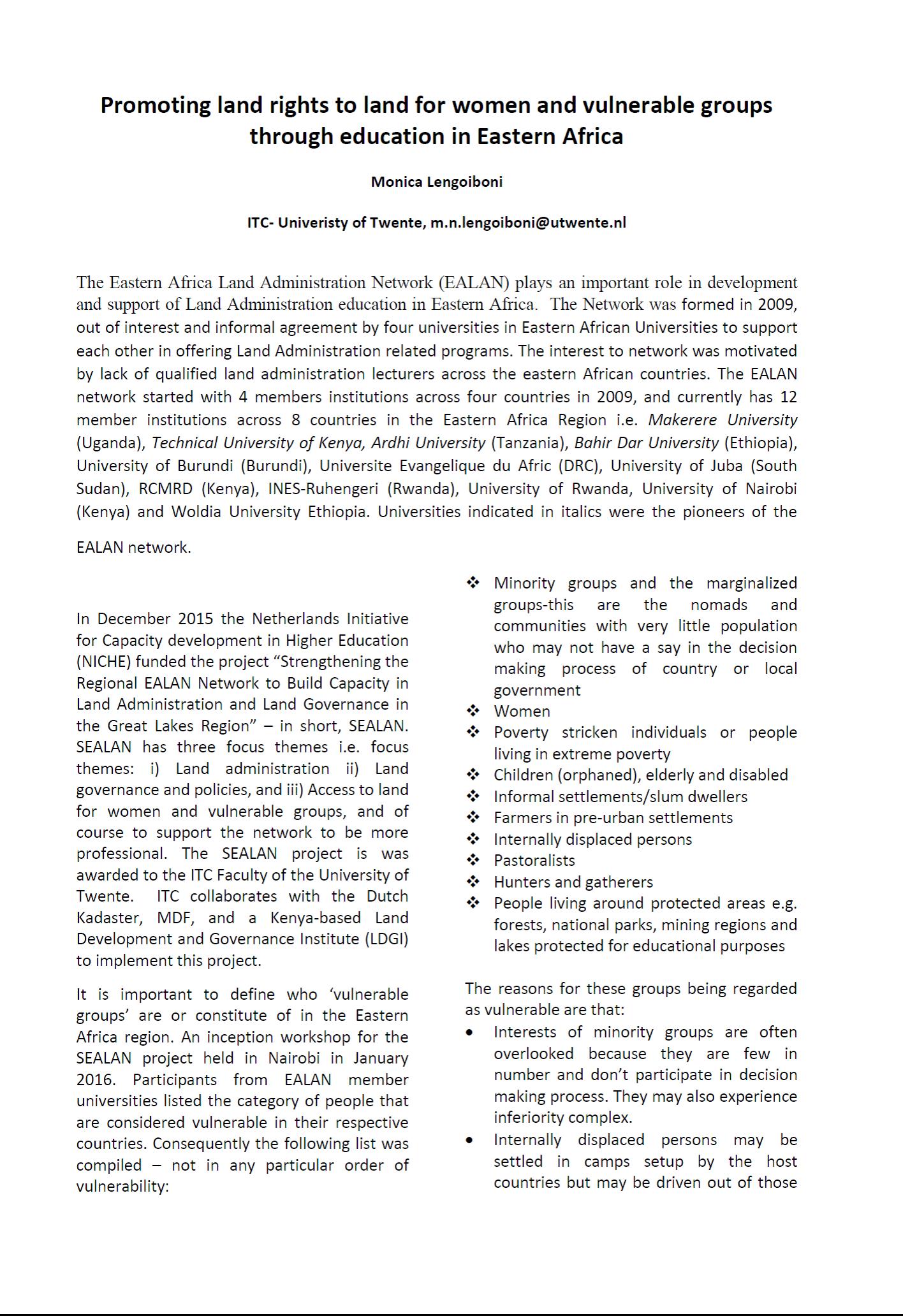Promoting land rights to land for women and vulnerable groups through education in Eastern Africa
The Eastern Africa Land Administration Network (EALAN) plays an important role in development and support of Land Administration education in Eastern Africa. The Network was formed in 2009, out of interest and informal agreement by four universities in Eastern African Universities to support each other in offering Land Administration related programs. The interest to network was motivated by lack of qualified land administration lecturers across the eastern African countries.



